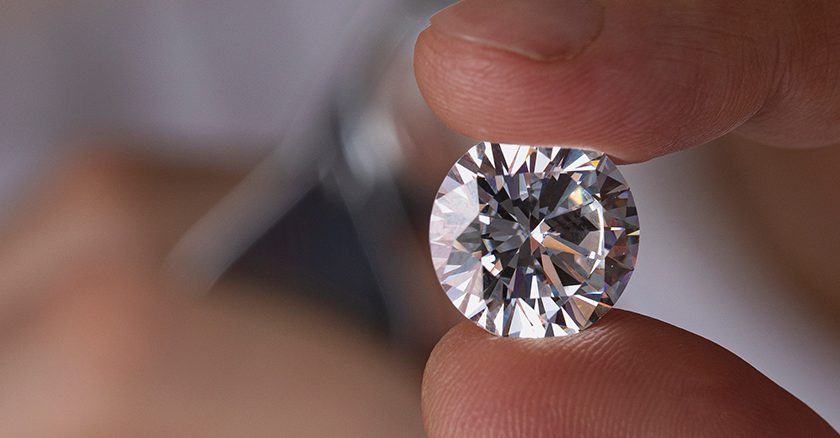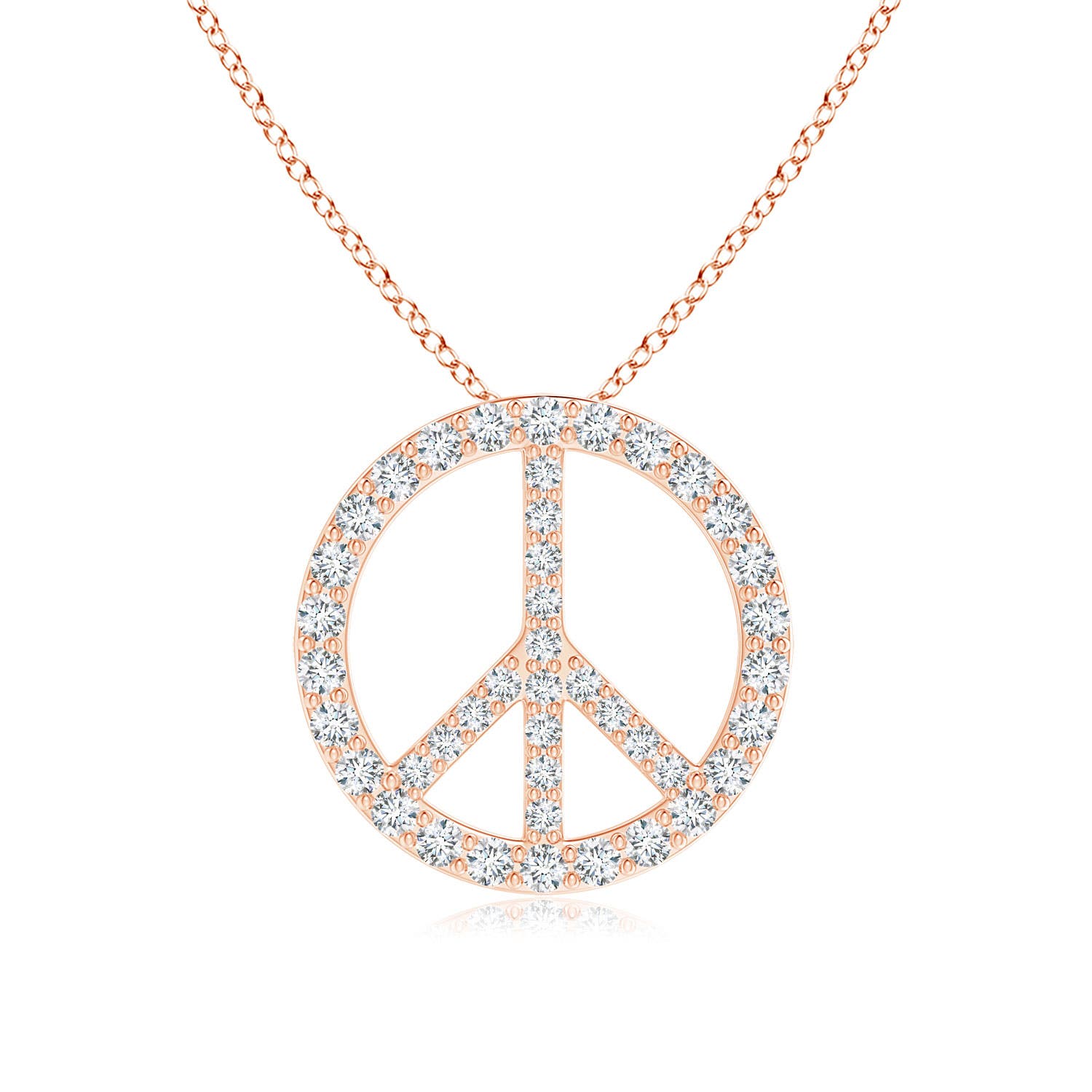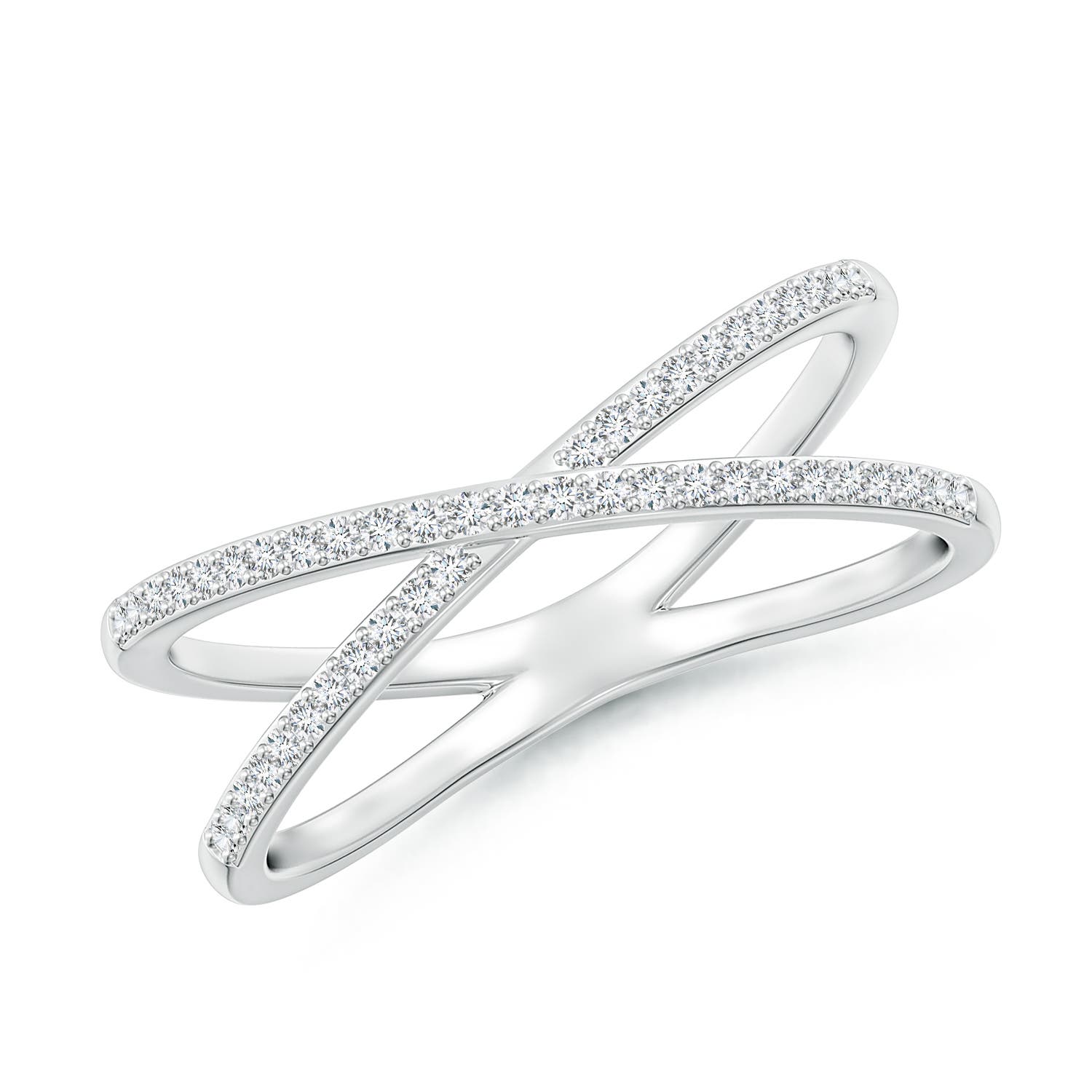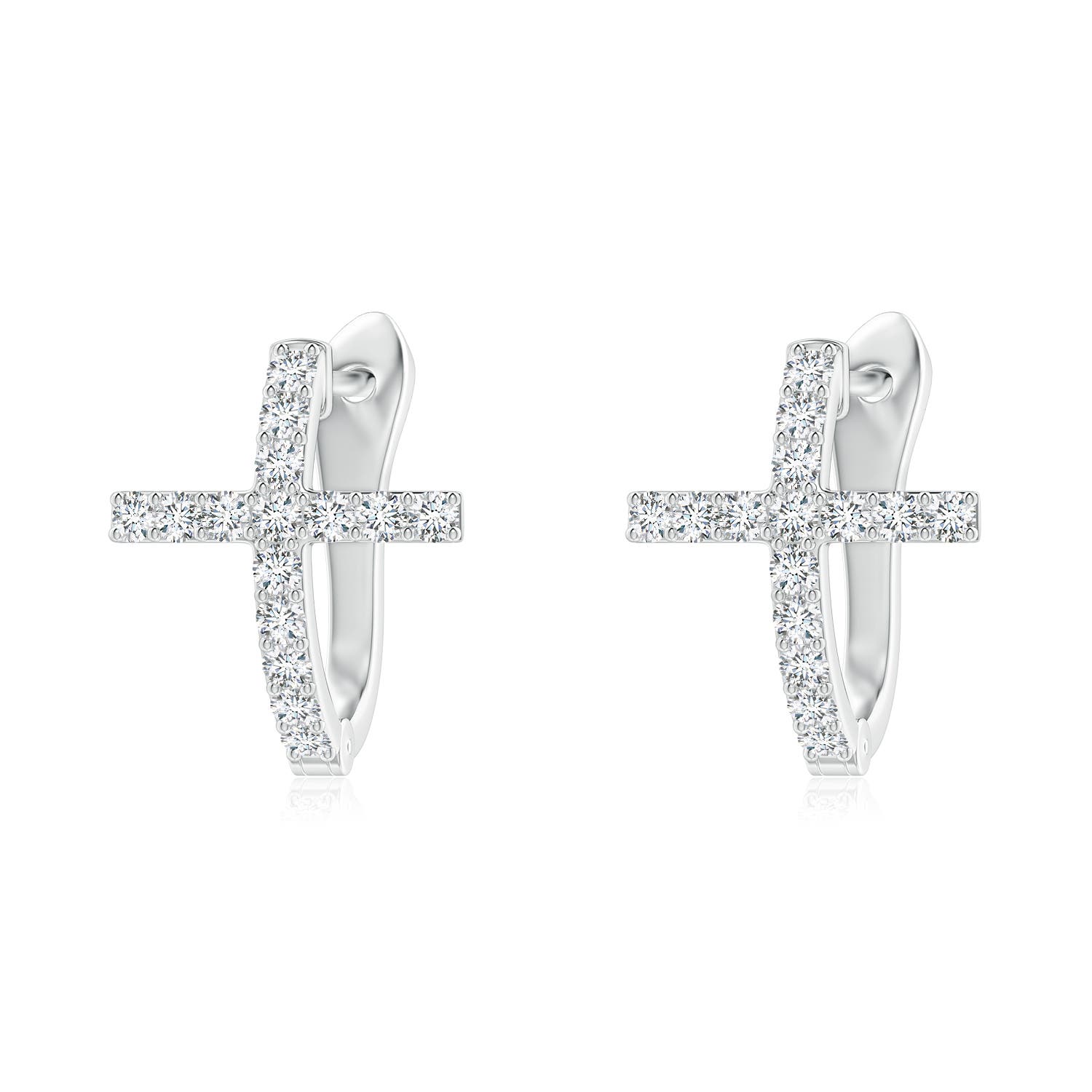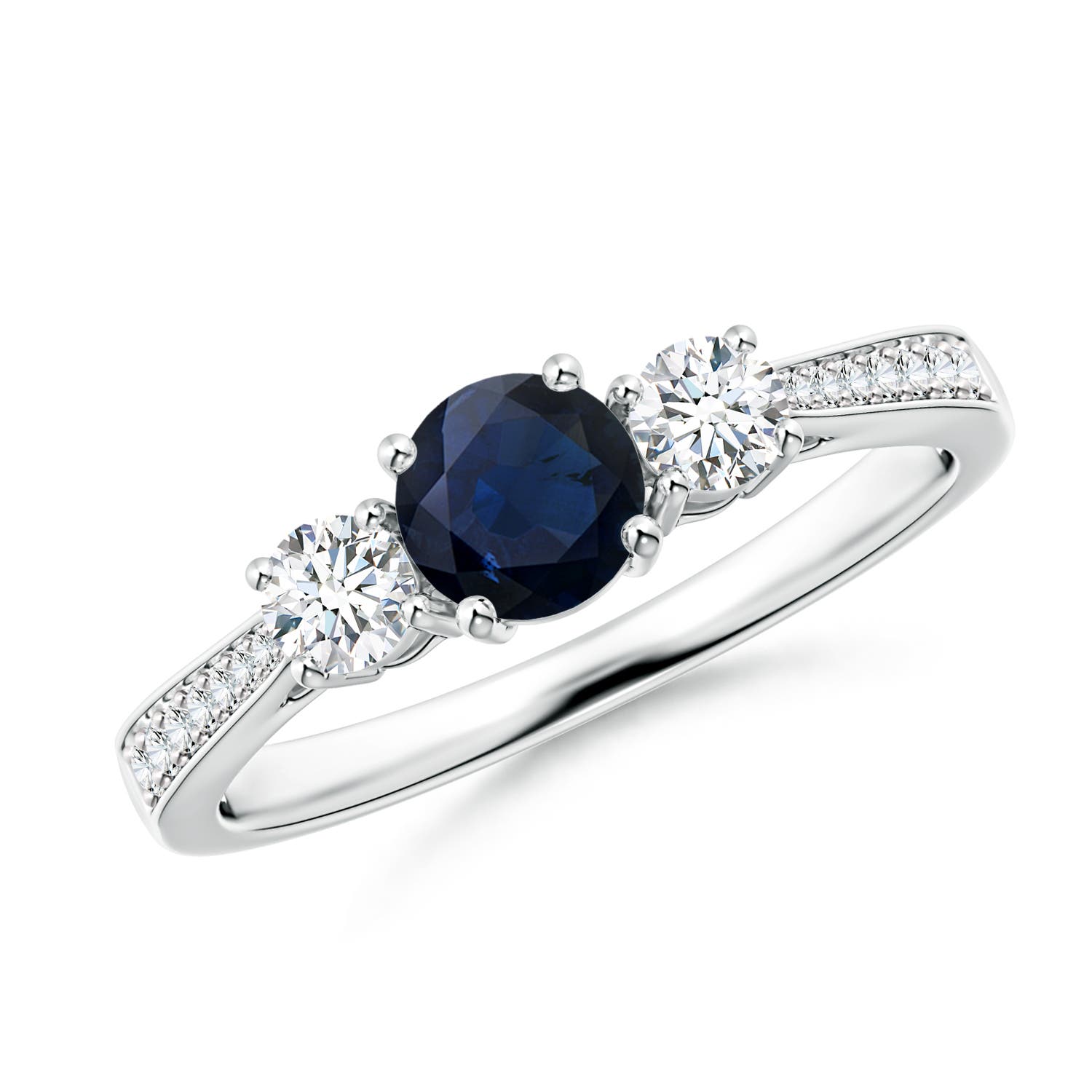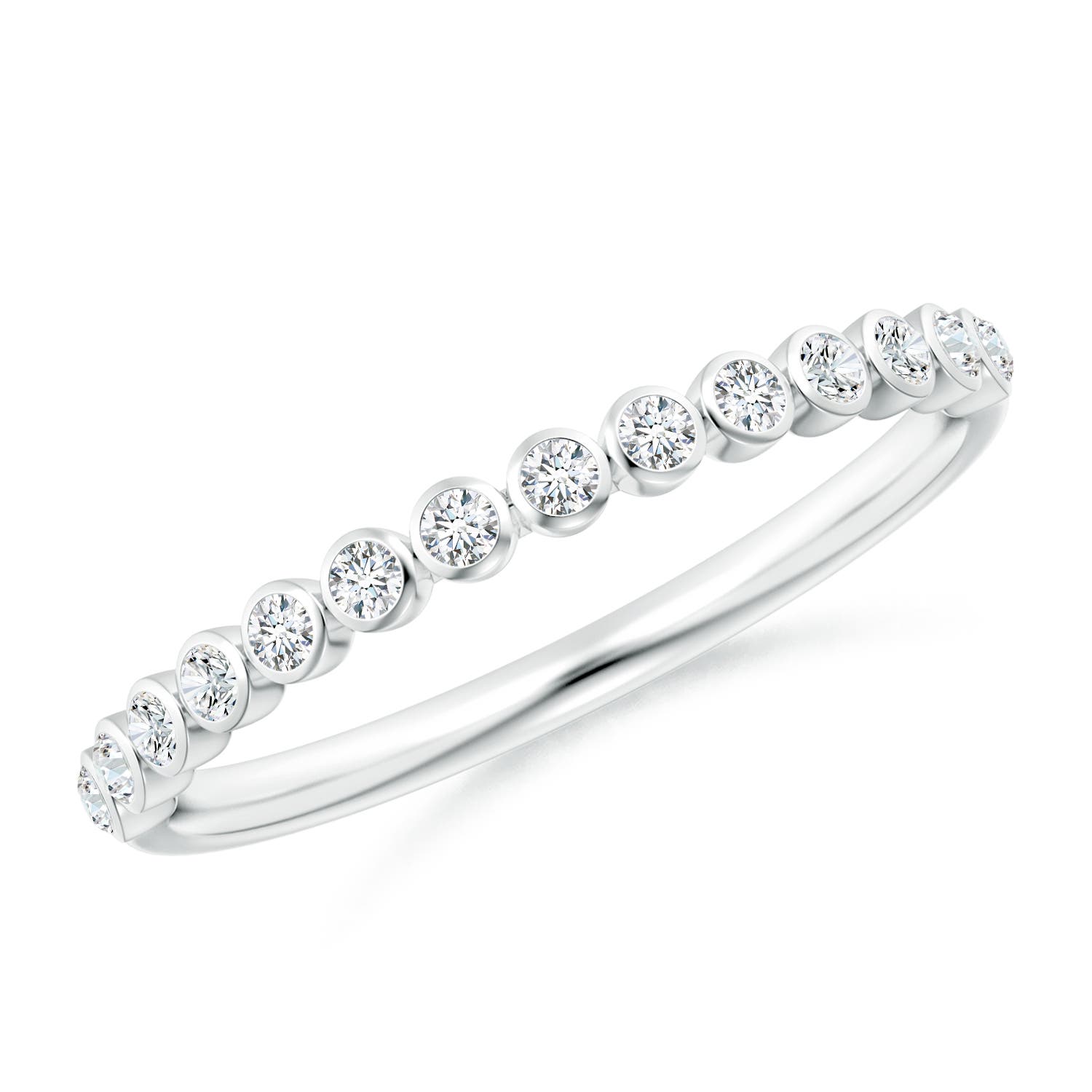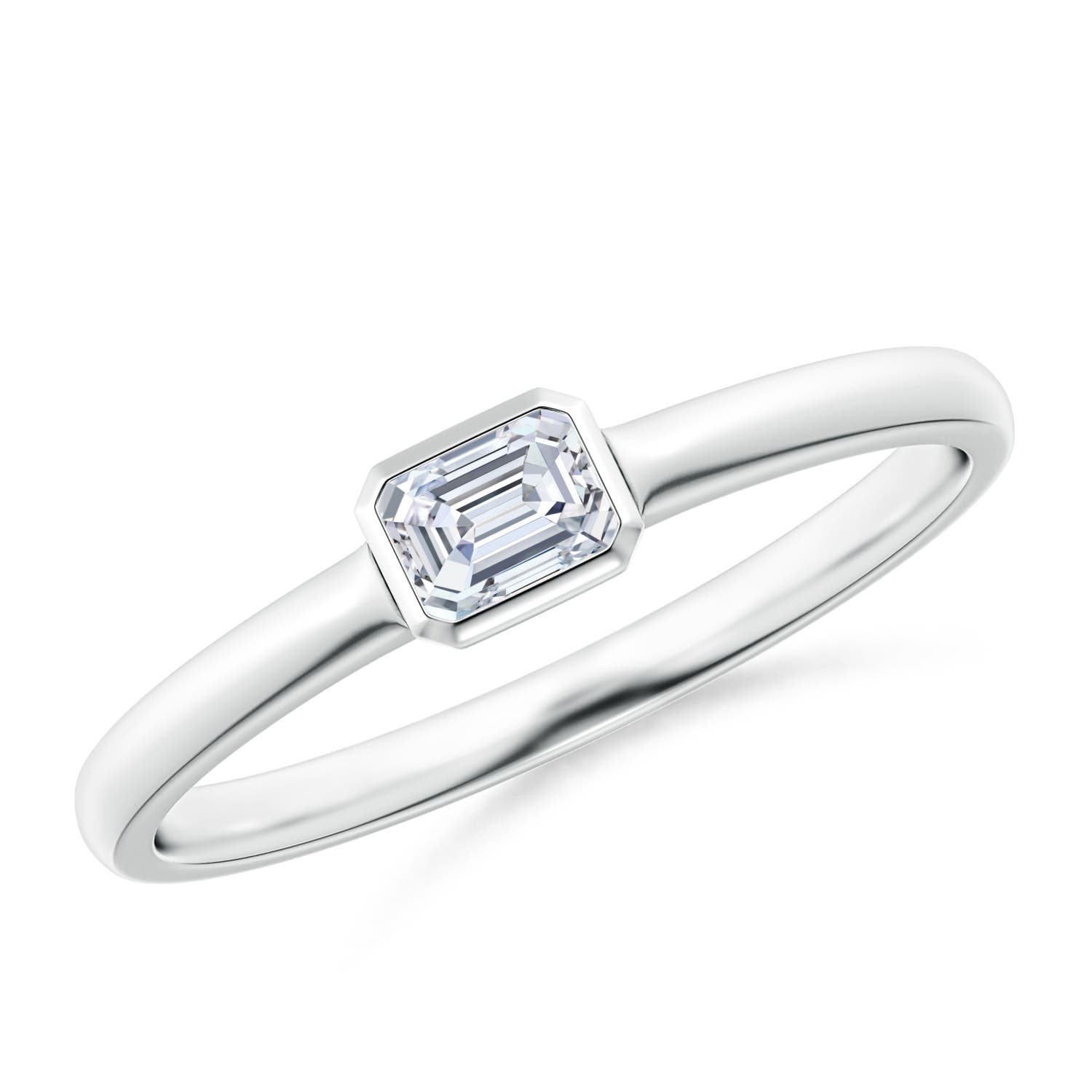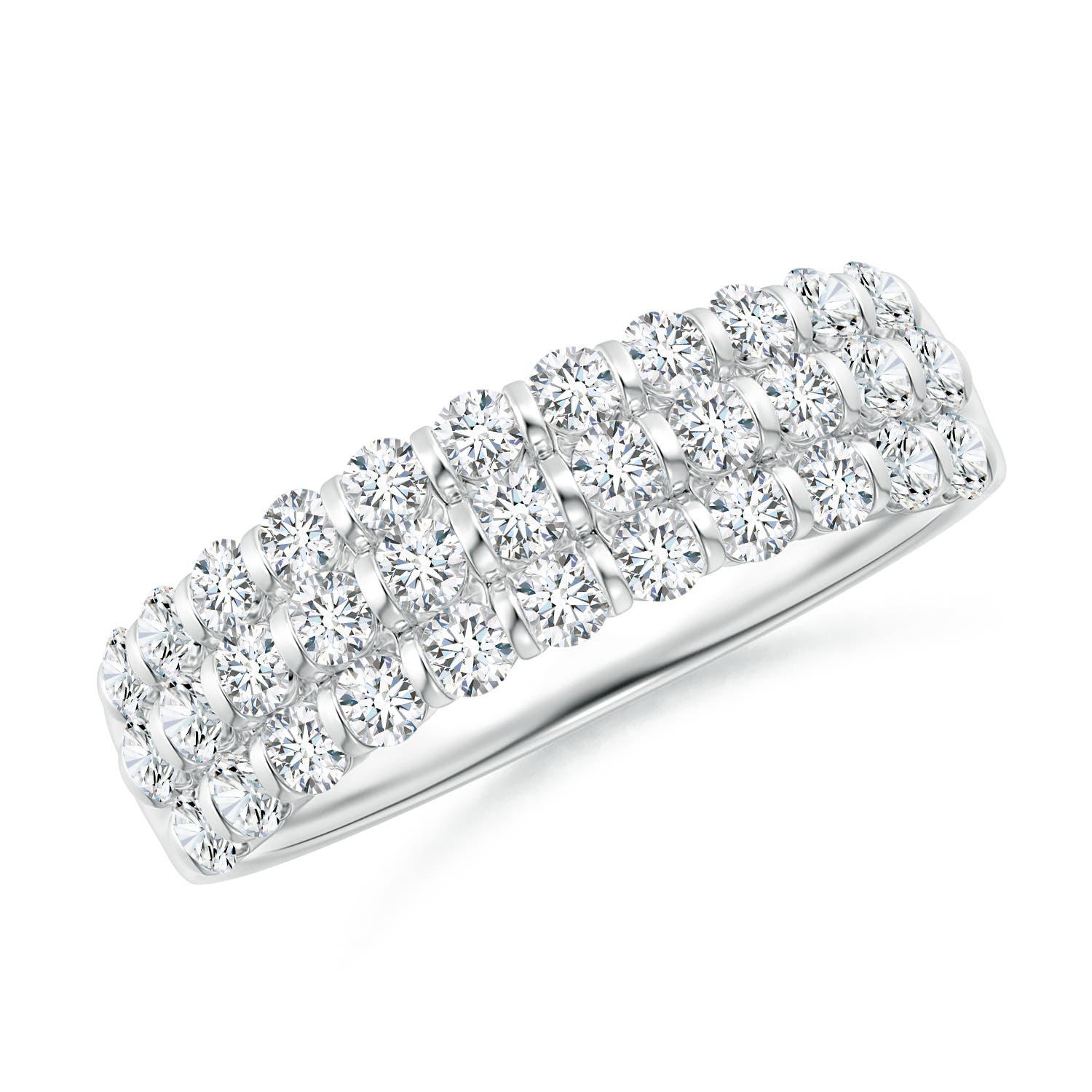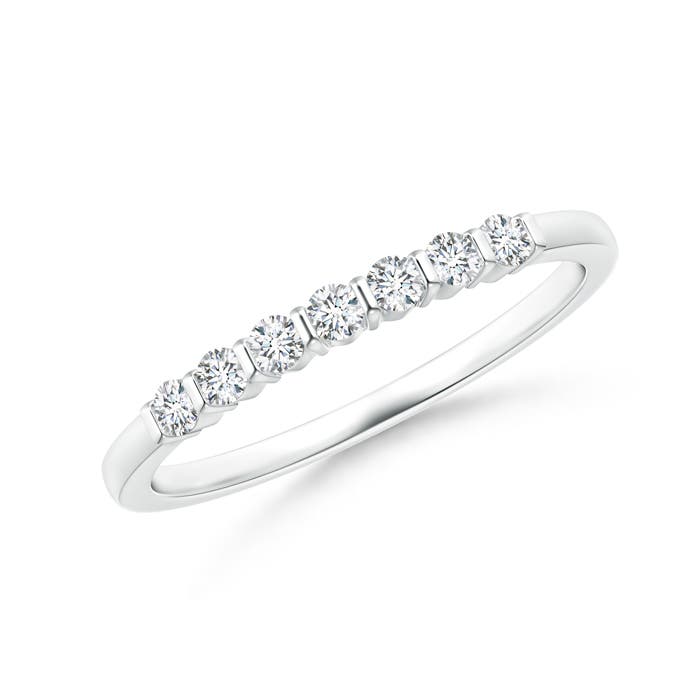Thinking of popping the question or do you just want to treat yourself? Either way, a diamond solitaire is a way to go. Subtle yet chic, this elegant beauty never fails to draw in a crowd and ensure all eyes are on you.
That said, we believe this style is only as good as its setting. Don’t know what is a diamond solitaire setting? If so, read on…because this article has all the answers you need.
So, What Is a Diamond Solitaire Setting?
According to the Oxford dictionary, a setting refers to ‘a piece of metal in which a precious stone or gem is fixed to form a piece of jewelry.’
And while there are several options out there, the ones most commonly used for diamond solitaire rings and other jewelry items are as follows:
1) Prong Setting
This setting constitutes two or more ‘prongs’ or ‘spikes’ that are used to secure a gemstone in place. It can be fashioned in several ways – examples of which, are as follows:
- Round prongs: As indicated by their name, these prongs feature rounded tips and resemble tiny balls when viewed from above. Typically, solitaire stud earrings and other accessories only use four round prongs to secure the gem. Having said that, in certain cases, six round prongs may be used.
- Claw prongs: This contemporary setting consists of two or more claw-shaped prongs.
- V-shaped prongs: Primarily used to protect gemstones with pointed edges, this type of setting features four V-shaped prongs.
What Makes the Prong Setting Famous?
Apart from the sheer number of options available, the prong setting uses very little metal to hold the stone in place. This allows light to enter the gem from different angles and enhance its sparkle. What’s more, unlike other settings, this particular mounting pairs well with almost every gemstone shape, so you can’t really go wrong here.
Also Read: Types of Jewelry Settings
2) Cathedral Setting
If you want a classy setting for your solitaire engagement ring, then the cathedral is definitely something you should consider investing in. As showcased by its name, this mounting features a large center stone held aloft by delicate metal arches that stem from the ring. When viewed from below, it looks like a basket that surrounds the stone and secures it in place.
Interestingly, this creation is meant to represent the majestic arches of the gothic style cathedrals and generally uses four to six prongs.
What Makes the Cathedral Setting Famous?
To begin with, this setting is an extremely secure one. So, if protection is your priority, then you know which mounting to opt for. Besides this, the cathedral setting features an intricate structure that emphasizes the beauty of the center stone and greatly enhances the grandeur of the overall piece. What’s not to love?
3) Bezel Setting
Believe it or not, the bezel setting is one of the oldest methods used to attach a stone to a piece of metal. In simple terms, this mounting is basically a metal collar that surrounds the gem and secures it in place. Currently, there are two variations of the bezel. They are as follows:
- Full Bezel: Here, the metal collar is placed around the entire circumference of the gem. The top portion of the same is bent inwards to prevent damage caused by any accidental knocks. In terms of appearance, this setting masterfully outlines the gemstone which helps you zoom in on the extravagance of the diamond.
- Semi-Bezel: A relatively modern take on the full bezel, this setting partially curves around the diamond in question. This allows light to enter the stone and bring out its sparkle.
What Makes the Bezel Setting Famous?
Unlike the previously mentioned settings, the bezel mounting boasts a rather minimalist vibe which makes it a fantastic choice for people who want to pair their stunner with a variety of outfits. Not only that, but it is also extremely secure. This solidifies its position as a wonderful alternative to the cathedral setting.
4) Bar Setting
This contemporary setting secures the diamond in place by positioning it between two vertical metal bars. Like the prong and semi-bezel setting, this mounting also allows light to pass through the gem which greatly intensifies its sparkle.
What Makes the Bar Setting Famous?
As touched upon before, this setting is primarily known for its unique look and ability to enhance a diamond’s sparkle. In addition to this, the mounting makes the gem look quite big by giving you an unobstructed view of the stone’s body. As such, if size and sparkle are your main priorities, then this setting is a fantastic option for you.
Now that we’ve answered the question ‘what is a diamond solitaire setting?‘, let’s move on to the next segment.
Also Read: Is Diamond Solitaire Design The Best for An Engagement Ring
What Should You Consider When Selecting a Diamond Solitaire Setting?
As with every part of a jewelry item, there are several things you need to consider before selecting a setting for your diamond solitaire. These are as follows:
• Protection vs. Sparkle
As seen thus far, each setting comes with its own set of unique USPs. So, it’s important to go through each of them and make your decision based on what you want your final product to look and be like.
For example, if you’re someone who prioritizes protection above all else, then a bezel setting would be perfect for you. On the other hand, if you want your stone to sparkle as much as possible, then we recommend opting for either a prong or bar setting.
• The Shape of Your Diamond
Of course, you should also consider the shape of your diamond when selecting your setting.
Diamond shapes with pointed corners, for example, are more likely to chip when dealt a hard blow. A great way to avoid this is to opt for a protective setting like a bezel. On the other hand, rounded shapes like the oval, for example, work wonderfully with almost every setting.
• The Aesthetic of Your Piece
Believe it or not, the setting you choose can greatly determine the aesthetic of your piece.
The bezel setting, for instance, is a great option for a minimalistic look. This is primarily because of its classy yet elegant structure. On the flip side, a cathedral setting is a fantastic choice for anyone who wants their stunner to showcase a vintage vibe. Apart from this, the prong mounting can be used to add a touch of elegance to one’s piece whereas the bar setting can infuse a bit of modernity into almost every design.
Also Read: Best Diamond Solitaire Ring Settings to Shine in 2025
Diamond Solitaires: What Should You Keep in Mind When Buying the Same?
A gemstone mounting isn’t the only thing that dictates an accessory’s beauty. And now that you know about the different diamond solitaire settings and the best ways to pick the same, let’s move on to the other things you need to keep in mind when customizing your piece.
1) The Shape of the Gemstone
When it comes to fine jewelry, the center stone is undoubtedly the showstopper. And that’s why it’s important to pick the best shape for it. ‘What are my options?’, you ask. Read on to find out…
• Round
One of the more classic choices out there, the round-shaped diamond has won the hearts of many over the years. Not only is it extremely elegant, but it is also the most sparkle-forward of the lot. It is designed using the brilliant cut which features 58 facets – all of which are specially created to enhance the stone’s shine.
Opt for this shape if: You’re someone who loves sparkle and also something timeless.
• Marquise
When it comes to dramatic shapes, one cannot do better than the marquise. Featuring a long body with pointed ends, this shape is undoubtedly the most theatrical of the lot.
Opt for this shape if: You want to add a hint of drama to your otherwise classy diamond.
• Square
Fashioned with the famous princess cut, this shape is masterfully designed to showcase the maximum amount of sparkle within the four corners of a chic square frame.
Opt for this shape if: You want something that’s a little more on the classic yet contemporary side.
• Heart
Speaking of showstopping shapes, next on this list is none other than the heart. Above all, this option is desired for the aura of romanticism that it infuses into every gemstone it touches (including the diamond).
Opt for this shape if: You’re a romantic who loves to wear their heart on their sleeves.
• Oval
Presented as an elongated circle, this shape is considered to be a somewhat modern take on the classic round shape. It is adored for its timelessness and never fails to capture one’s attention.
Opt for this shape if: You’re in the market for something that blurs the lines between classy and chic.
• Pear
Last but not least on this list is none other than the pear shape. Frequently compared to a teardrop, this form is a wonderful blend of the round and marquise shapes.
Opt for this shape if: You’re looking for a classic with a hint of modernity.
2) The Metal of Your Choice
Currently, there are five metal options available. They are as follows:
1. Silver
One of the more affordable metals out there, silver is known worldwide for its alluring glow. It is incredibly soft and is therefore mixed with several metals like zinc, nickel and/or copper to gain strength. Interestingly, sterling silver is the most common type available and features a 92.5% purity rate.
Pros
- It is relatively easy on the pocket.
- It is adored for its natural luster.
Cons
- Some people may experience an allergic reaction to the nickel present in this metal.
- Silver tarnishes easily and can be a little difficult to maintain.
- Even when mixed with other metals, silver is still quite soft and can get scratched, deformed and bent quite easily.
2. Platinum
Named after the Spanish word ‘Platina,’ this silverish-white precious metal is all the rage today.
Pros
- Platinum is extremely rare. This makes it a great option for anyone who wants a unique piece.
- It is hypoallergenic in nature.
Cons
- This metal can get dull over time.
3. White Gold
Like silver, gold is quite soft and needs to be combined with different metals to become harder. Depending on the metals used, this process could actually result in the metal changing color. White gold is one such example of this and gets its wonderful hue from the silver, palladium and nickel present within its composition.
Pros
- Believe it or not, white gold is one of the most sought-after gold variations in the market today. This is mainly due to its contemporary vibe.
Cons
- As with silver, white gold also gets its strength from nickel amongst other metals. Because of this, it is considered to be an allergen and can cause a skin reaction. Having said that, one can find hypoallergenic variations of this metal in the market today. Here, the nickel content is typically swapped with another metal.
4. Yellow Gold
If you want your metal to look as close to pure gold as possible, opt for yellow gold. Gorgeous to look at, this precious metal gets its strength from the presence of silver, copper and zinc.
Pros
- Because of its yellow hue, this metal is commonly associated with traditional pieces. This makes it a great choice for anyone who wants their jewelry to have a classic feel.
- This metal is quite easy to maintain.
Cons
- Yellow gold is quite malleable and is more prone to scratches.
5. Rose Gold
Of course, we can’t really complete this list without talking about rose gold. Created by blending pure gold and copper, this precious metal features an eye-catching pink tinge.
Pros
- Because of the copper content present within the same, this metal is quite durable.
- It is a great option for you if you want to add a touch of romance to your piece.
Cons
- It may cause an allergic reaction.
How Do You Clean Your Diamond Solitaires?
Apart from ‘what is a diamond solitaire setting?’, one of the most common questions we get is ‘what is the best way to clean your diamond solitaire?’ Mentioned below is a detailed guide on how to do the same.
- In a bowl, mix a cup of lukewarm water with a few drops of mild liquid soap.
- Next, soak your accessory in the same for 3-5 minutes.
- After the required time has passed, remove your jewelry item from the soap solution and scrub it with a soft-bristled brush. Pay special attention to the setting here as that’s where most of the dirt lies.
- Once done, place your diamond solitaire jewelry under running water to wash away the excess soap and leave it aside to air dry.
Did You Know?
That according to a recent study, 25% of over 7000 women reported that they were proposed to with diamond solitaire engagement rings.
Want to know about the clarity of a diamond in detail? Read our article titled, ‘What is diamond clarity? – chart, grade and quality.’
























